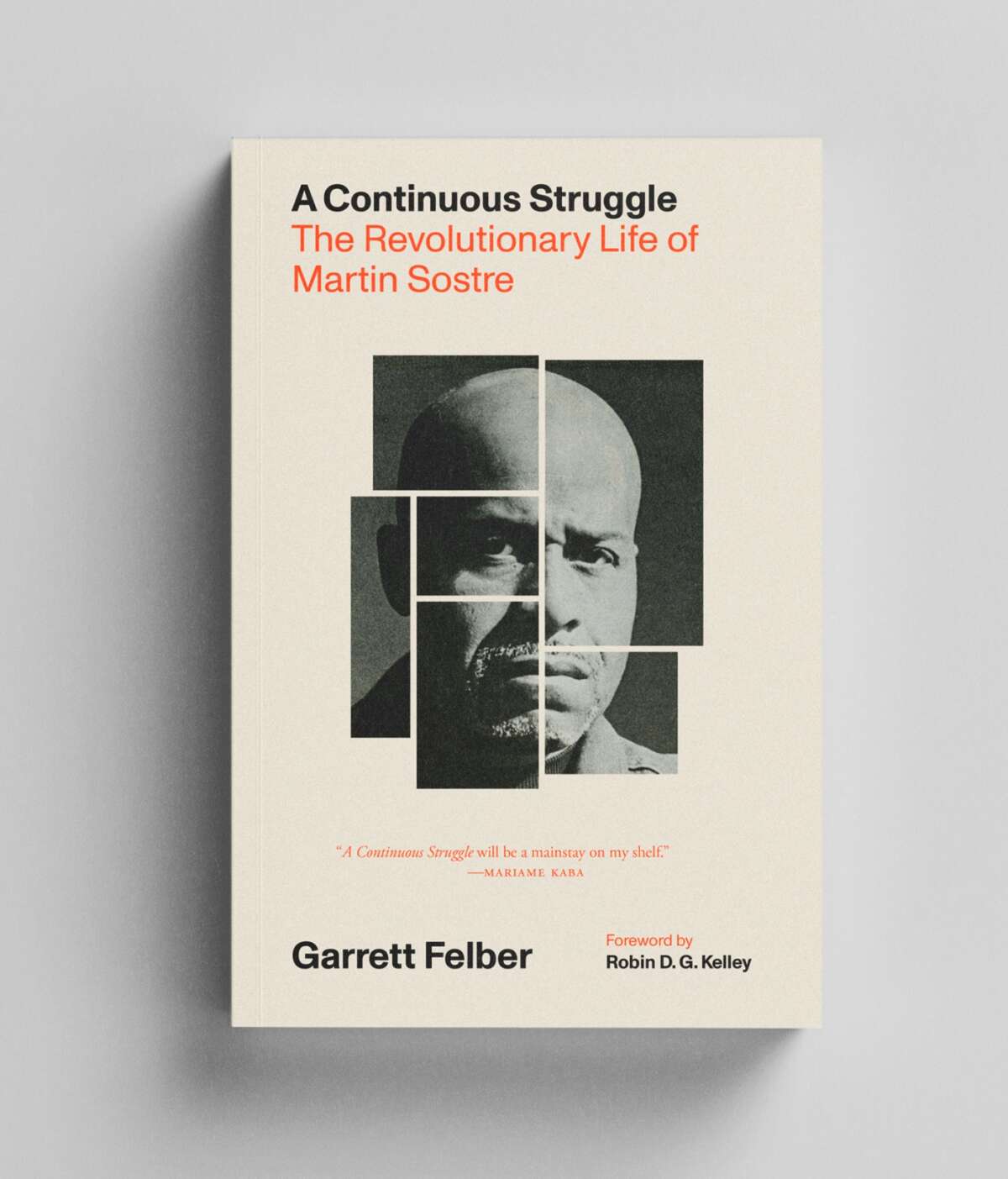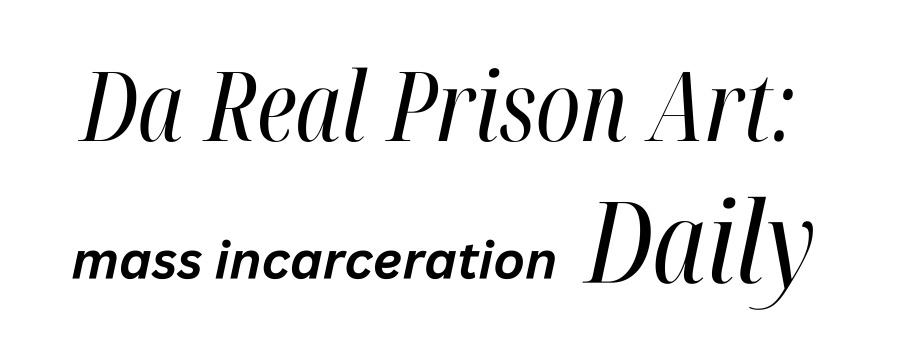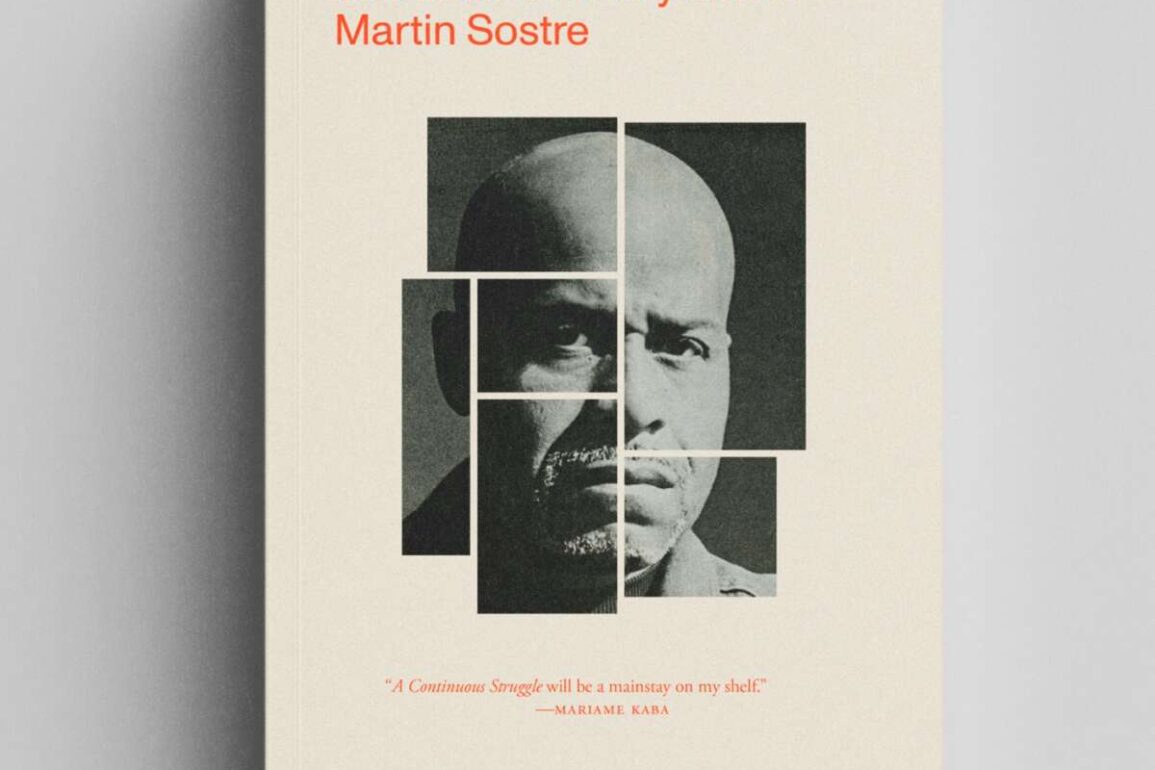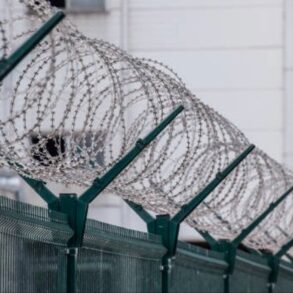Outside of prisons and the movements that work to abolish them, the life and legacy of Martin Sostre is little known. A Black Puerto Rican anarchist born in East Harlem, Sostre became a politicized prisoner in the early 1960s who, as a renowned jailhouse lawyer, used the criminal legal system to benefit himself and those incarcerated alongside him. He gained international recognition in his ultimately successful freedom campaign and continued to fight government repression and the violence of structural racism for the rest of his life. Yet he died in relative obscurity at the age of 92.
A new book by historian Garrett Felber, A Continuous Struggle: The Revolutionary Life of Martin Sostre, aims to make Sostre’s fascinating life and abolitionist legacy accessible and relevant to today’s liberation struggles. The book will be released by AK Press on May 6, 2025. For each copy pre-ordered from AK Press or Burning Books, a free copy of the paperback prison edition will be sent to an incarcerated reader.
“Alongside defense campaigns for Angela Davis and Huey Newton, the movement to free Martin Sostre represented one of the most improbable, if since forgotten, victories of the Black Power era,” Felber writes in the book.
Abolitionist Josh Davidson spoke with Felber about Martin Sostre, his life of “continuous struggle,” and why this book is so important and needed today.
The following interview has been lightly edited for clarity and length.

Josh Davidson: What initially led to your correspondence with Martin Sostre before his passing in 2015? How did you first hear about him, and why is the story of Sostre and his “original Black political ideology” important today?
Garrett Felber: I initially came across Sostre’s name in a letter written to Malcolm X in the early 1960s by a Muslim incarcerated at the Attica prison in New York. He was a comrade of Sostre, and they were being held in solitary confinement along with dozens of others punished for their identification with the Nation of Islam and lawsuits against the state over the right to practice Islam inside. They were asking Malcolm X to testify as a key witness in their upcoming trial. I read the letter in the early 2010s, and had just begun a dissertation on the politics of the Nation of Islam during the civil rights era (which eventually became my first book, Those Who Know Don’t Say). At the time, there was a barebones Wikipedia page for Sostre, which I later learned was maintained by his son Vinny. I found Sostre’s address and wrote him a letter. To my surprise, he wrote back!
Despite being 90 years old at the time, he politely told me he was too busy for an interview. We corresponded briefly, and in his last letter to me, he mailed a packet of primary documents which included a revolutionary newsletter he published from solitary confinement and an article about a daycare center he cofounded with activist Sandy Shevack in Paterson, New Jersey. “The enclosed documents contain more information than I could possibly convey to you via email or phone,” he wrote to me. I later came to understand this as a key principle of Sostre’s political practice: He believed actions spoke louder than words.
Sostre recognized that the struggle is not only continuous, but also contiguous. Borders and prison walls physically disconnect us from one another, and in doing so, they obstruct our abilities to organize collectively against a common oppressor.
Ultimately, Malcolm X did testify in the case in Buffalo, New York, alongside Sostre, who had helped write the lawsuit. The case resulted in an important legal precedent in what would soon emerge as the prisoners’ rights movement. As historian and academic Robin D. G. Kelley points out in his beautiful foreword to the biography, the politics of this period are too often delimited to debates about Malcolm X and Martin Luther King Jr. Besides the obvious sexism of that paradigm, it also forecloses other types of revolutionary politics.
Sostre offers a crucial window into another strain of Black revolutionary politics which came from the streets and bookstores of Harlem during the Great Depression: the armed struggle of the Puerto Rican nationalist movement and the movement for religious rights led by imprisoned Muslims in the Nation of Islam. Sostre moved from Black nationalism, to revolutionary Black nationalism, to Maoism and Marxism-Leninism before eventually identifying as an anarchist. What made Sostre such an original political thinker was how he learned from his life experiences and continued to develop his ideas through the contradictions that emerged with each phase of struggle. Through this, he helped lay the foundation for contemporary Black anarchism and prison-industrial complex abolition.
Sostre oftentimes referred to life outside of prison as “minimum security” and life behind the bars as “maximum security.” He recognized the presence and violence of government repression both inside and outside of prison walls, and he consistently combated this using a variety of strategies. From his establishment of numerous radical bookstores to his prolific prison litigation, his creation of autonomous defense committees that outlived his own incarceration to his work on housing justice in New Jersey, Sostre never stopped working in whatever way was needed “building tangible counter-institutions that served the community.” What can Sostre’s commitment to a life of continuous struggle teach us today as we face fascism at home, genocide in Gaza and impending climate catastrophe?
Sostre recognized that the struggle is not only continuous, but also contiguous. Borders and prison walls physically disconnect us from one another, and in doing so, they obstruct our abilities to organize collectively and horizontally against a common oppressor. By using the phrase “minimum-” and “maximum security” to delineate both sides of the prison walls, Sostre importantly interrogated the commonsense notion that the other side of coerced captivity is freedom. Instead, he emphasized the continuum of “repressive forces [that] exist outside as well as in.” The prison is not an institution apart from society; it is a concentrated expression of its most oppressive forms.
Sostre importantly interrogated the commonsense notion that the other side of coerced captivity is freedom.
This simple point is so important to the way we organize, so we do not delude ourselves into thinking we are waging “single-issue” struggles. I tell a story in the book about Sostre’s contemporaries, the revolutionary organizers James and Grace Lee Boggs, who took exception to Sostre’s resistance to forced rectal searches and requirements to shave. “Does he really think it is possible to build a revolutionary movement from inside the prisons?” the Boggses asked. I owe a good deal of my political development to the Boggses and share mentors who do as well, so I was stunned and upset when I first came across their critique. But through conversations with Stephen Ward, who wrote a wonderful dual biography of them, I learned that their criticism was based on what I believe is a fundamental misunderstanding about the meaning of the Attica rebellion and the capacity of incarcerated people to wage revolutionary struggle from inside. They saw the revolt narrowly through what Sostre termed the “Attica reform demands.” Instead, as anthropology professor Orisanmi Burton makes so clear in his groundbreaking book, Tip of the Spear, Attica was an act of revolutionary counter-warfare and what he calls “abolitionist worldmaking.”
So instead of reproducing that mistake and creating a hierarchy of separate struggles, we must embrace their interconnectedness and search for points of solidarity. As Sostre reminded one of his defense committees: “revolutionary struggle is a multi-dimensional struggle; we must eventually broaden our struggle horizontally as well as deepen it vertically.” The prison was a site of struggle — like the courtroom or the streets — and Sostre waged that struggle through a variety of tactics, including letter-writing, self-defense and assertions of bodily autonomy, prison litigation, print publications, art and cultural production, labor organizing, sit-ins and other occupations, and much more.
Until now, with A Continuous Struggle, the legacy of Sostre has been overlooked and understudied. Why are books by and about Sostre not on our shelves alongside those by and about Angela Davis, Malcolm X, George Jackson or Eldridge Cleaver?
This is a great question that I’ve asked myself many times. I don’t think there’s a single answer. But certainly one reason is that Sostre never authored a book, unlike the others you mentioned. The one book about him — The Crime of Martin Sostre — was written by Vincent Copeland of the Workers World Party (WWP) with very little input from Sostre, who was being held in complete isolation during the year it was composed. He briefly glanced over the manuscript at trial, then, just before its publication, Sostre broke with the WWP and thousands of copies languished in a warehouse for years. Sostre talked at various points in his life about writing a memoir. He even met with film producers in Los Angeles at one point about a possible biopic where he would be played by James Earl Jones, but he was skeptical of its political integrity and it never materialized.
Sometimes we memorialize the dead but fall short of honoring the living. Who are the elders that we should be supporting, learning from and lifting up today?
Instead, much of Sostre’s political thought lives on through his organizing and deeds — in courtroom transcripts, legal filings, letters from prison, articles in underground newspapers, and through his relationships with people. I am grateful to all of Sostre’s comrades and their families who shared their materials and memories with me. The archive of struggle resides with those who wage it, and so much of Sostre’s legacy is now better documented and preserved thanks to their generosity.
For those wanting to learn more beyond the biography, I suggest starting with the Martin Sostre Institute, which was conceived by Lorenzo Kom’boa Ervin. Sostre’s personal papers are also now archived in the Labadie Collection at the University of Michigan, and I am in the process of donating many of the oral history interviews and other materials I compiled to the Center for Puerto Rican Studies at Hunter College, where they will be available to the public. There are other efforts to carry on Sostre’s legacy such as the Martin Sostre Solidarity House in Milwaukee, Wisconsin; the work of R.E.A.L. Youth Initiative in Chicago; and the Justice for Geraldine and Martin campaign in Buffalo. I hope this is all just the beginning of a renewed interest in Sostre’s legacy as well as the broader histories of Black anarchism and prison radicalism.
Sometimes we memorialize the dead but fall short of honoring the living. So much of what is happening with Sostre’s legacy now, I wish would’ve happened decades earlier. Who are the elders that we should be supporting, learning from and lifting up today? The campaign to exonerate Sostre’s co-defendant Geraldine Pointer is a great example of this.
You raise the idea of prefiguration numerous times throughout the book — the idea of constructing today the lives and societies we want in the future. “He saw what could be, rather than what was,” as you write, and he acted to make it a reality. What is the significance of prefiguration in the story of Sostre — to ourselves, our movements and the material world?
Yes, there are two anarchist ideas centered around deeds that appealed in particular to Sostre. One was propaganda of the deed, and the other was prefiguration. Prefiguration can take many forms, but I love how simply Sostre conveyed it: “If we do it right, it’ll end up right.” What he meant was that if we spend our energy destroying the state or other oppressive systems while failing to address the ways they shape our lives and how we relate to each other and ourselves, we’ll just wind up running in place, replacing one oppressive system with another. One of his critiques of Marxism-Leninism was the idea that there are particular revolutionary conditions and how this notion left people inactive and waiting. Sostre believed the moment was always upon us. This revolutionary optimism is palpable in his writings and actions, and today it serves as an urgent call to action.
The best example of prefiguration in Sostre’s life was the decentralization of his defense committees, which he considered his first experiment in anarchist organizing. After relying on a centralized committee in Buffalo for more than five years, Sostre began developing autonomous collectives across the country, and especially upstate New York. These committees came together around the struggle to emancipate Sostre from prison but were conceived more broadly as “revolutionary bases” for future-oriented struggle. I give the example of the Potsdam-Canton committee in the book, which went on to organize around environmental justice and Indigenous sovereignty after Sostre’s release. Within this committee, there were debates about horizontalism — how the meetings should be run, who should shape the agenda, etc. Sostre even envisioned buying land and developing a cooperative grocery, dry cleaners and apartments. Many of these ideas were actualized in a different form with the work he did for 20 years in New Jersey with Shevack, converting abandoned buildings into a community center, daycare and affordable housing.
His basic belief was that only through tangible counter-structures could people begin to imagine the world differently and see themselves as part of that process. So much of the power of prefiguration is in demonstrating step-by-step that a new world is not only possible but exists within and around us every day. It is always in the process of becoming, just as we are.
As you write in the book, Sostre believed “individual resistance could move people toward revolutionary action.” You also highlight Sostre’s advocacy of the anarchist concept of “propaganda of the deed.” What can we learn from this and how does this apply today?
I think he really broadened its meaning by showing how it could be creatively applied to his own conditions experiencing the hidden violence of the prison. His refusal to shave his quarter-inch beard and submit to rectal assaults in prison were examples of “propaganda of the deed.” He used this resistance not only to defend what he considered the “final citadels of [his] personality, human dignity and self-respect,” but also to alert those outside the prison to these dehumanizing practices and encourage those inside to resist alongside him.
In a world that needs to be reimagined and rebuilt on every level, we can’t afford to struggle narrowly.
Similar to prefiguration, propaganda of the deed has the potential to build solidarity and show people their own power. It also raises the important question of political violence and spotlights the true purveyors of violence: the military, landlords, corporations, police and so on.
Much like Sostre’s lifetime commitment to a “continuous struggle,” you always impress me with your ability to fight oppression using various tactics and strategies. Since leaving the life of academia, you have started the Free Society Mobile Library, which offers accessible revolutionary literature in Portland, Oregon; you co-founded Study and Struggle, an inside-outside prison abolition study group; and you work diligently to raise the voices of and bring awareness to the Mississippi Five, women who “have collectively been imprisoned for over 175 years and denied parole 47 times.” Can you talk about these different campaigns you work on and why a diversity of tactics is necessary in our movements and organizing spaces?
A lot of my work centers around political education, and one thing I’ve learned from Sostre and others is that we need to create as many on-ramps as possible. Being “politicized” is not the same as having concrete opportunities to contribute to radical organizing. I love that line from professor, author and activist Toni Cade Bambara: “The role of the artist is to make the revolution irresistible.” I think the role of the educator is to make revolutionary ideas accessible. Some people will be drawn to art and cultural production, others to books and the written word, and still others to care work and developing relationships. In a world that needs to be reimagined and rebuilt on every level, we can’t afford to struggle narrowly.
As Sostre pointed out: “Since oppression is multidimensional does not common-sense dictate that resistance to it be multidimensional; with each level of oppression challenged by a commensurate level of revolutionary resistance?”
This post was originally published on this site be sure to check out more of their content.









